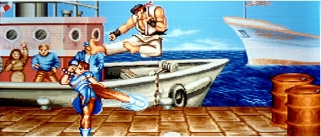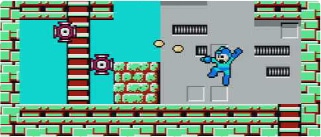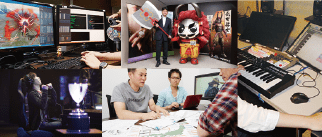“Sengoku BASARA 4 Sumeragi” Development Anecdote
Commemorating the 10th year of the series, newest title “Sengoku BASARA 4 Sumeagi” is the first game of the series available on PlayStation 4, and showcases a host of new gameplay features while boasting the most action and story to date. For this reason, the development team faced numerous challenges in making the game.

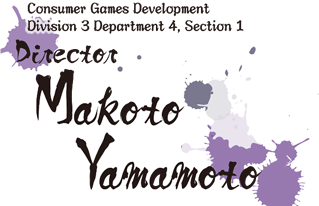
After joining Capcom as a designer, Yamamoto was promoted to director and was involved in the launch of “Sengoku BASARA”. He has directed the series ever since and also oversees the comics, TV animation and stage performances.
After joining Capcom as a designer, Yamamoto was promoted to director and was involved in the launch of “Sengoku BASARA”. He has directed the series ever since and also oversees the comics, TV animation and stage performances.
Emphasizing the new title’s value and significance won
development approval.
“How can we get development approval from management?”
Makoto Yamamoto anxiously thought. It was the summer of 2013, and they were working through the final stage of development on” Sengoku BASARA 4″. Along with producers Kobayashi and Kadowaki, Yamamoto went into the development approval meeting for the next title in the series.
July 2015 marked the 10th anniversary of “Sengoku BASARA”, and Yamamoto had his sights set on releasing a major title to commemorate this milestone; a game of remarkable size that would excite users, packed with more playable warlords and featuring casino-like game mechanics. The concept, sales targets, and development cost were all included in the plan proposed at the development meeting, but the management team looked unconvinced. That was to be expected, as the game market was in a period of upheaval. Orders for the previous title, “Sengoku BASARA 4”, had fallen short of the target, so they were in no situation to gain development approval simply based on expectations and enthusiasm alone.
However, Yamamoto and the others did not back down.
“Please think about it this way: continuing the ‘Sengoku BASARA’ series with a new title opens the door to a wide range of opportunities: from animation and companion books, to merchandise, stage performances, collaborations with local municipalities and Pachislo machines. This new title can be the source of all that!” “Sengoku BASARA” had indeed sparked a renewed interest in history and been utilized in regional municipality collaborations, facts that merited attention; further, there was no doubt this multiuse of the property contributed to profits. The management team’s position gradually began to soften. “When they approved the proposal, I was extremely relieved. At the same time, we had gone in with an unwavering resolve, which was appropriate for a title marking the series’ 10th anniversary.”

“Sengoku BASARA” contents are scalable. “The title can be experienced through a variety of entertainment, including TV animation, comics, stage performances and theme parks,” notes Yamamoto.
With the development team assembled,
the race against time begins
The first order of business was the development structure.
Reflecting on the extreme disorder of the development structure for the previous title, “Sengoku BASARA 4”, Yamamoto created a new structure to facilitate idea creation while building mutual understanding. Centering on those with previous experience developing for “Sengoku BASARA”, he assembled a team that included planners, designers, sound creators and programmers. Some members were appointed as section leaders for the first time; it was a team built to engage younger staff in pushing their upper limits for the title—and once organized, the race against time was on. Title launch was scheduled for July 2015.
However, as soon as work began, a major change to the game’s specifications became necessary: it would have to be compatible with the PlayStation 4 (PS4) next-generation console. Retailers and users were already moving in this direction.
“In addition to PlayStation 3 compatibility, we also need to develop this game for the PS4. Our users are expecting it!” There was no time to waste. The development schedule was revised and the team worked feverishly on.

Members convey and share all their game concepts. It is important to continually maintain mutual understanding through close communication.
Uniting team capabilities to create a title befitting the 10th
anniversary
With section leaders at the forefront, the team pushed to meet Yamamoto’s expectations, bringing both action and overall size to levels that were sure to satisfy. And then it was July 2015. The appellation “Sumeragi” (an old Japanese word referring to the first emperor or the imperial line) was derived from the main warlord in the game, Ashikaga Yoshiteru, known as the emperor; thus the title became “Sengoku BASARA 4 Sumeragi”. In addition to an epic story of the warring states, the game features 40 playable warlords—the most in series’ history—a new “battle roulette” gameplay mechanic, and the same exhilarating action and uplifting enthusiasm the series is known for. “I directed the development team to include as many gameplay elements as they could within our limited schedule. This was no small task, but I think each of their individual efforts was instrumental in moving this project toward completion. The team pulled together behind the idea of making a game users enjoy, and their dedication overcame all obstacles to make this a success.” The “Sengoku BASARA” 10th anniversary—it seems this year again promises another heated battle will unfold.
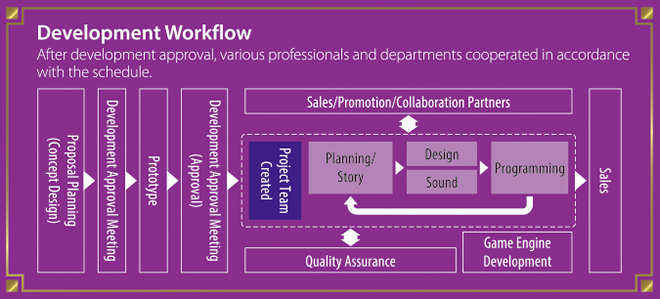
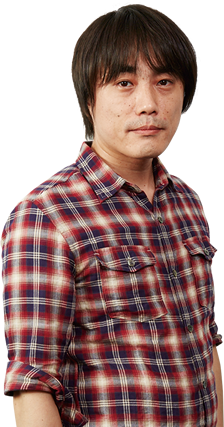
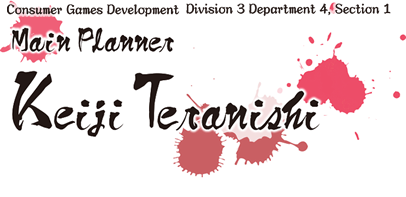
After entering Capcom mid-career as a planner, Teranishi joined development on “Sengoku BASARA 4”, which was already underway. He also coordinated the development team on Sumeragi as a main planner.
After entering Capcom mid-career as a planner, Teranishi joined development on “Sengoku BASARA 4”, which was already underway. He also coordinated the development team on Sumeragi as a main planner.
Revising the new casino gameplay mechanic in pursuit of the
“Sengoku BASARA” feel
“The most challenging aspect of creating this title was the new ‘battle roulette’ feature,” says main planner Teranishi, adding, “Yamamoto, the director, talked about including a casino element from the conceptual phase, but wasn’t sure about the specifications.” Initially, Yamamoto envisioned a standard casino game scenario where players would use medals to place bets in an attempt to win more medals, which could then be traded for weapons or other prizes. “That was the best proposal Yamamoto could come up with considering the development schedule and cost.
However, once the design doc was created and development began, it didn’t feel sufficient in terms of promoting the distinctive, exhilarating action ‘Sengoku BASARA’ is known for.”
Amid backlash from the development team—who questioned whether this really was interesting, and thought action elements needed to be incorporated rather than simply offering a game of roulette—main planner Teranishi gathered the team consensus and made a proposal to Yamamoto, asking, “won’t you rethink this feature one more time?” Despite the shorter-than-usual development period and internally feeling the need to hurry, the entire team wanted to create an interesting game appropriate for the 10th anniversary. Yamamoto listened and decided to halt development of the battle roulette feature to rethink the concept.
Battle roulette offers a variety of devices to expand playing fun
Mindful of making the most of limited development time, section leaders engaged in numerous discussions, and after sorting through a number of choices decided on a proposal whereby the roulette wheel appears and adds various gameplay elements to the battlefield, giving users a wider array of gameplay to enjoy during battles. Once the roulette wheel is spun, different pockets appear at random, such as a winning pocket that awards medals, a losing pocket that exacts a punishment, or a character-change pocket that switches the player character. Presenting both opportunities and risks, this “battle casino” skillfully combines action and roulette.

“Sengoku BASARA 4 Sumeragi” offers the most game content of the series. Even those who played the previous installment can enjoy the new gameplay offered by battle roulette.
“The roulette feature involved feedback not only from the planners, but from all members throughout the team. As the series’ 10th anniversary title, we wanted to make the best game possible, so the inclusion of diverse perspectives from everyone involved in “Sengoku BASARA” up to now was indispensable.” In this way, more and more unique ideas for roulette were devised: Musashi Miyamoto of “Sengoku BASARA 2” might come chasing after players, or players might get to operate the mechanical weapon Akatsukimaru to blast through swarms of enemies, or metal basins might come raining down on player’s heads. “The designers and programmers really came through with the creation of fantastic, over-the-top action for the battle roulette that perfectly gelled with the “BASARA” universe.”

All ideas that seemed promising were brought out and judged on their merits. It was always rewarding for planners to see their ideas included in the game.
Close communication made the game even more interesting
According to Teranishi, the reason the team was able to proceed with development so quickly yet maintain a high level of quality was pin-point progress management and getting all team members aligned in the goal of creating a title users would enjoy. “When important decisions had to be made, we looked to the director, Yamamoto. He has been in charge throughout the entire ‘Sengoku BASARA’ series and has the deepest understanding of this intellectual property’s world. However, I would raise concerns if the user perspective had gotten lost or when I felt the gameplay was not interesting.” Ideas were exchanged until everyone was satisfied, as Capcom facilitates an environment enabling such a process. To ensure even smoother progress management, design and programming leaders worked closely to exchange information. “15 minutes before the end of each workday, we met to confirm the progress of each section.
Tasks were written down and copied onto white boards to thoroughly visualize the project.” This enabled the team to engage in daily work process improvements. The ever—evolving game development environment; it is here that the games users choose are born.
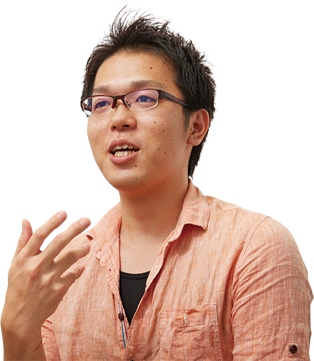
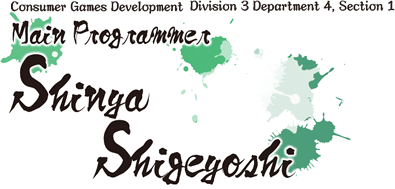
After joining Capcom in 2006 as a programmer, Shigeyoshi worked on “Devil May Cry 4”, “Sengoku BASARA 3” and “Sengoku BASARA 4”. He has worked as a Main Programmer since working on “Sengoku BASARA 4”.
After joining Capcom in 2006 as a programmer, Shigeyoshi worked on “Devil May Cry 4”, “Sengoku BASARA 3” and “Sengoku BASARA 4”. He has worked as a Main Programmer since working on “Sengoku BASARA 4”.
We must understand what users truly want, and give it to them.
What? You want two new moves for all 40 warlords? And we’re revising the battle roulette feature now!?” The news of the director’s idea came as a bit of a shock to Shigeyoshi, who had just returned from vacation.
As the main programmer responsible for keeping a team together, the only thing he could think to say was “impossible”.
He had already established a schedule and allocated tasks to staff members in line with the project details. In terms of man-hours, there was not enough time to give each warlord two new fighting techniques. When he tried pleading with director Yamamoto he was told, “The game isn’t meaty enough. We need to add more gameplay elements. You can combine existing assets used up to now if you want.
Whatever the means, I need you to get this done.”
Shigeyoshi could understand the director’s intentions, but internally he remained skeptical. “If the quality suffers by adding these techniques, will that make users happy? Is that really what they want from this game?” Shigeyoshi was worried, but he had to persevere. He pondered how best to approach this situation.
Through teamwork, all 40 warlord’s new techniques are created
“Rather than stringing old techniques into a one new one, I decided to create fresh techniques that played off of the originality of each character.” Shigeyoshi was aware of user feedback for “Sengoku BASARA 4” that indicated the desire for “even newer discoveries and gameplay surprises.” He figured he could come up with at least one technique—and if that technique provided brisk, new gameplay, Shigeyoshi believed users would certainly be satisfied.
First, he had to get the director to agree. He proposed two ideas from which to choose: the first was a throwaway proposal, and merely an extension of the existing techniques; the other was a prototype of an all-new flamboyant, action technique. When the director played the original, new technique Shigeyoshi proposed, he was amazed at the quality and praised it for adding a new dimension to the gameplay. His proposal now accepted, Shigeyoshi got down to work.
Making time between his main job of leading programming, coordinating the planning and design teams and managing schedules, Shigeyoshi created actions from the ideas and insights he had been nurturing. However, creating unique techniques for 40 characters was not an easy task. “Seeing me struggle, other team members pitched in to help. Once these techniques were completed, I had such a feeling of accomplishment and was so deeply moved by the cooperation I received,” Shigeyoshi remembers with a smile.

Improvements are not limited to characters and techniques; menu transitions and control-feel have also been refined. Programming has been used to enhance usability and provide more immersive game play.

Close collaboration within the team.
Adjustments can be made in real-time while running the program.
Unknown worlds: taking on programming for the PlayStation 4
On this title, there was one other mountain to climb: simultaneous development and release for both the PlayStation 3 (PS3) and the PlayStation 4 (PS4).
For development, Capcom was using its “MT Framework” proprietary game development engine; however, this engine is compatible with the Xbox 360, PS3 and Windows OS. At the time, development for the PS4 was an unknown world.
First, the team developed the game for the PS3, and then began development for the PS4. They took great pains to create beautiful visuals rendered in high-resolution, full HD1080p, and by cooperating with the team creating the new, next-gen development engine internally, they were able to realize stable movements in full high-definition, despite a tight schedule. Further, up to now, two-player mode had been rendered in 30 frames per second (fps), but on the PS4 version they were able to up this to 60fps, enabling gameplay at the same tempo as single-player mode. In seeing how much smoother and more beautiful the images on the screen were, Shigeyoshi’s sense of accomplishment made all the hard work worthwhile.
Game creation is a place where taking on challenges gives rise to entertainment. Perhaps it is even a battlefield where departmental barriers are overcome.


Related Contents
-
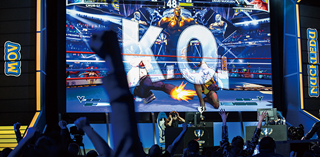
eSports Movement
Street Fighter: As Much Fun to Watch as it is to Play. The Spread of eSports and a New Horizon of Possibilities(Added Novemner 10, 2017)
-
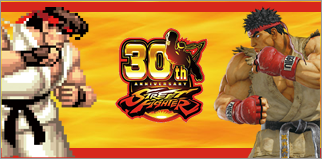
The Street Fighter Series 30th AnniversaryLoved the World Over, the Gold Standard of Fighting Games
(Added November 13, 2017)
-
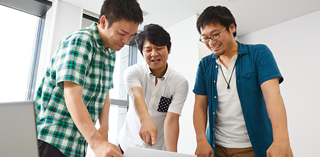
Creative Minds: Voices from the Frontline of Development
Coupling Technological Capabilities with Teamwork to Maximize Monster Hunter’s Appeal(Added November 17, 2017)
-
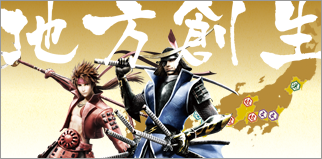
Utilizing Popular Characters for Regional Growth
An introduction to our CSR efforts. See first-hand accounts of how Capcom works together with local governments.
(Added March 30, 2017) -
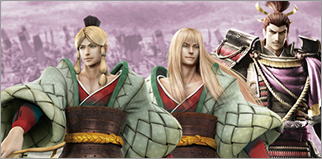
"Sengoku BASARA" Special Feature #2
"Sengoku BASARA 4 Sumeragi" Development AnecdoteThe development team's interview of "Sengoku BASARA 4 Sumeragi", commemorating the 10th year of the series. (February 26, 2016)
-
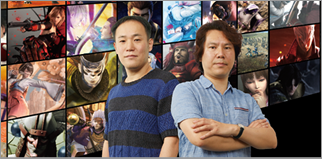
"Sengoku BASARA" Special Feature #1
The Story behind Development of "Sengoku BASARA"From the series debut in 2005 all the way to its tenth anniversary in 2015, follow us down the decade-long road of the "Sengoku BASARA" series. (December 24, 2015)
-
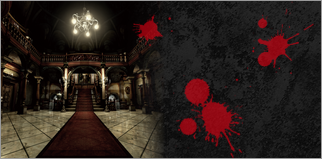
The Secret of Success "Resident Evil"
We present the tumultuous history of "Resident Evil", the quintessential Capcom title which boasts 60 million in total sales for the series as of Sepetember 30, 2013 and is still loved today 17 years after the release of the first game.(December 26, 2013)
-
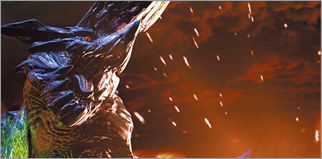
The Monster Hunter Hit Trajectory
Boasting 21 million units for the entire series and creating a social phenomenon referred to as the "Monster Hunter Craze", we trace the development of Capcom’s flagship "Monster Hunter" from inception to hit status.(October 18, 2012)
-
-
July 30, 20251Q FY2025 Financial Results Announcement
-
June 30, 2025-July 29, 2025Quiet Period
-
June 23, 2025Cash Dividend Disbursement
-
 Integrated Report
Integrated Report-
IR Materials Download
-
IR Social Accounts
-
Top 5 Recommended Pages
(as end of Jan, 2024)
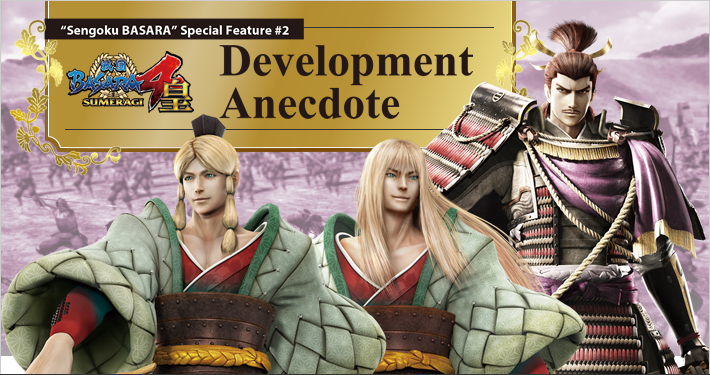

![[Development from a Director's Perspective] User enjoyment is the driving force behind our team.](/ir/english/assets/images/feature/2015_basara02/img_section01_h4.png)








